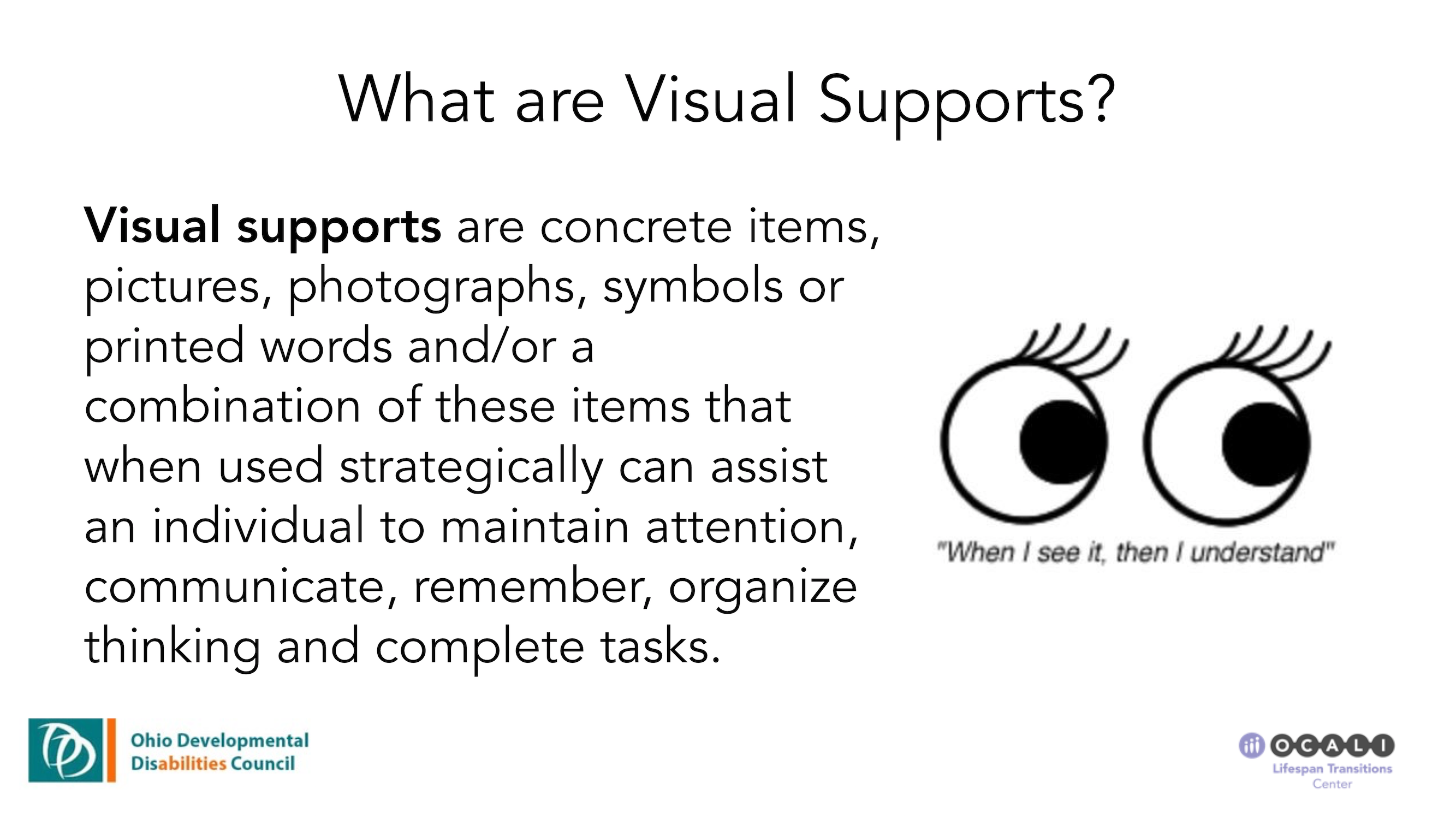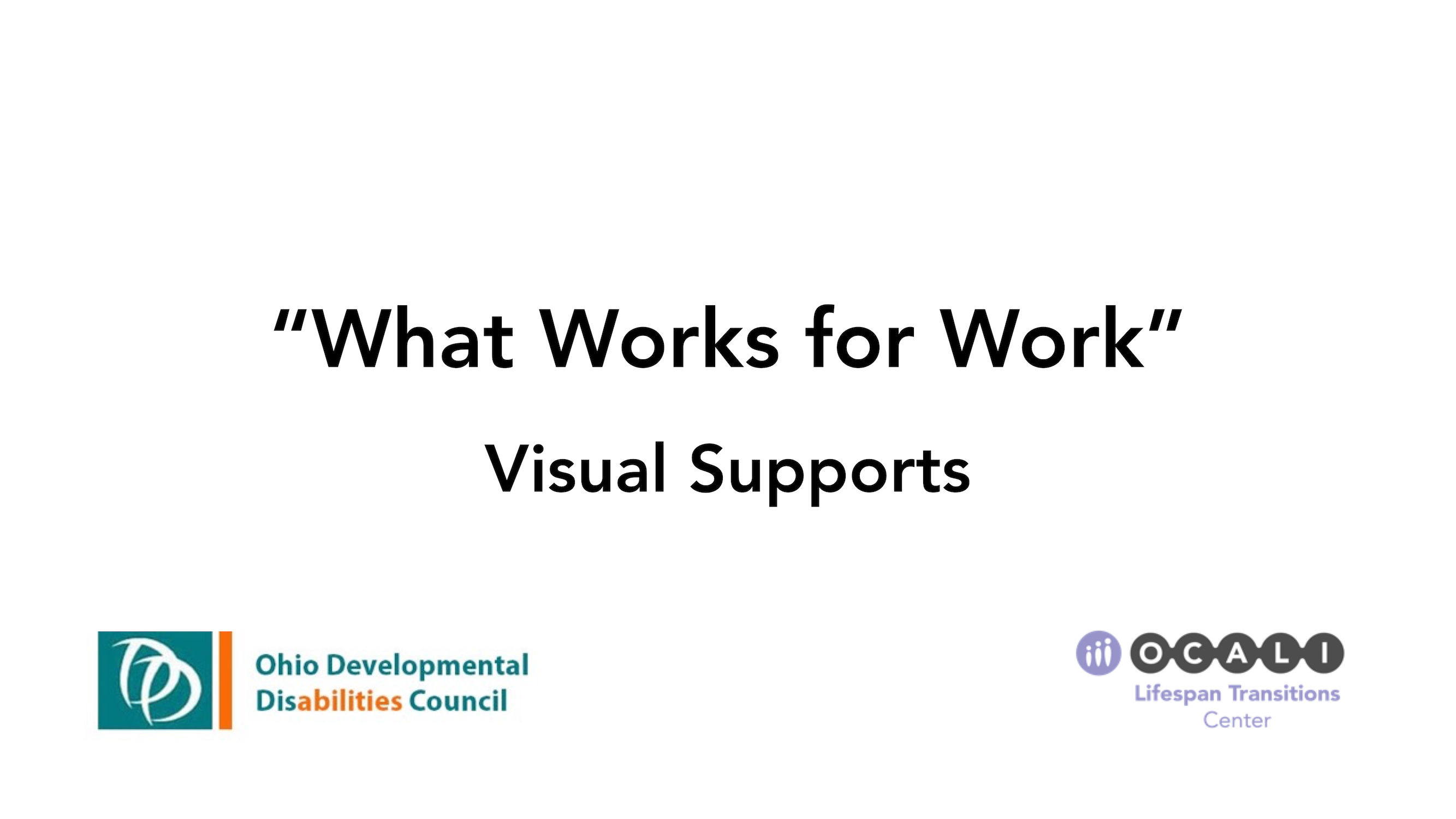Strategies for Employment Success for ASD - Visual Support for Communication
Table of Contents
Video: Write it Out, Draw it Out
Brenda and Carmen use Write it out, Draw it out to help Carmen understand what others are thinking in a situation as well as to help Carmen problem solve how to get help. This visual strategy assists to develop clear communication techniques. This technique can help an employer or new team working with individual develop a common understanding of a workplace situation, as well as identify the best solution for a problem and teach a new skill to address the concern.
Visual is Key
On the job, visual supports can be used in conjunction with the more frequently used verbal and demonstration strategies to reinforce new tasks and skills, including social skills. Consider visual supports for strategies and interventions that address:
- The interview or trial work experience
- Transportation to and from the job
- Preparation for the job
- Initial days/weeks of the job
- Changes that may occur in the workplace
- The ongoing supports that will remain in place
Use a Full Spectrum of Visual Supports
Visual strategies and supports vary based on what works best for the individual and the type of skill or activity that is being addressed. The following are a few examples of the wide range of visual supports that may be effective in the workplace:
- Concrete and visual descriptions of job duties, break times and workplace expectations
- Daily schedules of activities and routines using words, pictures, symbols and/or objects
- Consistent structured physical environment
- Visual reminders of workplace rules and social norms in terms of “what to do”
- Visual cues used by support person to remind when too close, too loud, need to respond, etc.
- Videos of the individual or others performing job or desired social skills
- Email as an adjunct to other communication
The examples below illustrate simple visual schedules that might be used in a workplace. One schedule provides photos and detailed steps for an individual that may require more direction. The other is a simple checklist on a dry erase board that can be created or edited as needed.

Video Modeling to Teach New Skills
Consider using video modeling to teach and support social competence in the workplace. Video Modeling is a strategy in which a teacher or job coach shows a video of desired behaviors or social interactions to a person. The individual then practices and imitates the behavior or interaction when in the appropriate situation.
Examples of social issues that can be approached using video modeling include:
- Appropriate greetings in the workplace
- Difficult relationship with the boss
- Isolation from co-workers
- Negative performance evaluations
- Social Interactions in the workplace
Additional video modeling resources can be found at the end of Implications and Strategies for Employment Success for Individuals with ASD
An additional resource for learning about visual supports is What Works for Work, Session Nine. This session provides in-depth information and examples about Visual Supports and the potential uses in the workplace. Within session nine, are examples, resources, activities, and teaching strategies for visual supports to support communication and socialization. Below are example slides from session nine.



